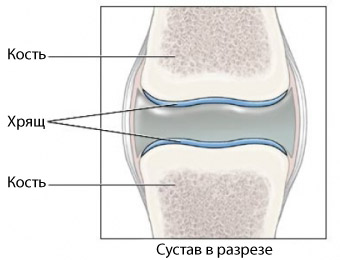Cancer of the cartilage – Xondrosarkoma
Hondrosarkomy description
Chondrosarcoma is a type of cancer, that develops in cartilage cells. Cartilage – connective tissue, which is found in many areas of the body, especially in joints.
This type of cancer, usually, develops in the cartilage cells of the femur, hands, clean, the knees and spine. Cancer of the cartilage can be affected by rib and other areas of the body.
Xondrosarkoma – the second most common type of bone cancer. It most commonly affects people aged 50-70 years. Chondrosarcoma rarely strikes those under 20 years.
Cancer occurs, When cells divide without control and order. If cells keep dividing uncontrollably, when the body does not need new cells, excrescent (weight) of cloth, called a growth or tumor. The term cancer refers to malignant tumors, that can invade nearby tissues and spread to other parts of the body.
As with all types of cancer, prognosis or outcome of the disease depends on, how large size reached the tumor and whether it has spread to other organs.

Causes of hondrosarkomy
The reasons for this type of cancer is completely unknown. In some cases, chondrosarcoma can be related to genetic factors.
Risk factors hondrosarkomy
Some factors, that, The researchers believe, may increase the risk of cancer of the cartilage:
- Cartilaginous tumor – benign bone tumor, which is often found on the hands;
- Osteoxondroma – the excess bone or cartilage;
- Some types of osteohondromy (bone tumor);
- Ollier's Disease, in conjunction with enhondromoy;
- Maffuchchi Syndrome, that causes a combination of jenhondrom and various tumors.
Symptoms hondrosarkomy
Cartilage cancer symptoms may vary depending on the location and severity of the tumor. The most common symptoms include hondrosarkomy:
- Big swelling or build-up on the bone;
- Pain, which gets worse at night;
- Pain, which is reduced after taking anti-inflammatory painkillers;
- Pain, that does not go away after rest;
- Pain, which gradually increases over time and can last for years.
Diagnosis of cancer of the cartilage
The doctor will ask about your symptoms and medical history, and perform a physical examination. Tests include:
- Biopsy – removing a tissue sample, to check for tumors (for the diagnosis of malignant hondrosarkom);
- Roentgen – test, that uses x-rays to obtain images of tissues, bones and cartilage;
- CT scan – X-ray views, which uses computer, to make pictures of internal organs, bones and cartilage;
- MRT – test, which uses magnetic waves, to make pictures of internal organs, bones and cartilage;
- PET / CT – test to evaluate the metabolic activity of tissue;
- Blood tests – to identify abnormalities in blood.
Treatment hondrosarkomy
Treatment depends on age, General health and stage of the disease and may include:
Surgery
Tumor removal surgery may be used.
Radiation therapy
High energy x-rays It is used to detect and destroy cancer cells.
Chemotherapy
Medicine can be used, that kill the tumor cells. Chemotherapy for the treatment of hondrosarkom is still in the research stage.
Physiotherapy
Physical therapy can be used, to speed healing of the affected area after surgery.
Prevention hondrosarkomy
Causes of hondrosarkomy still not explored until the end, Therefore, methods of preventing this disease are unknown.
